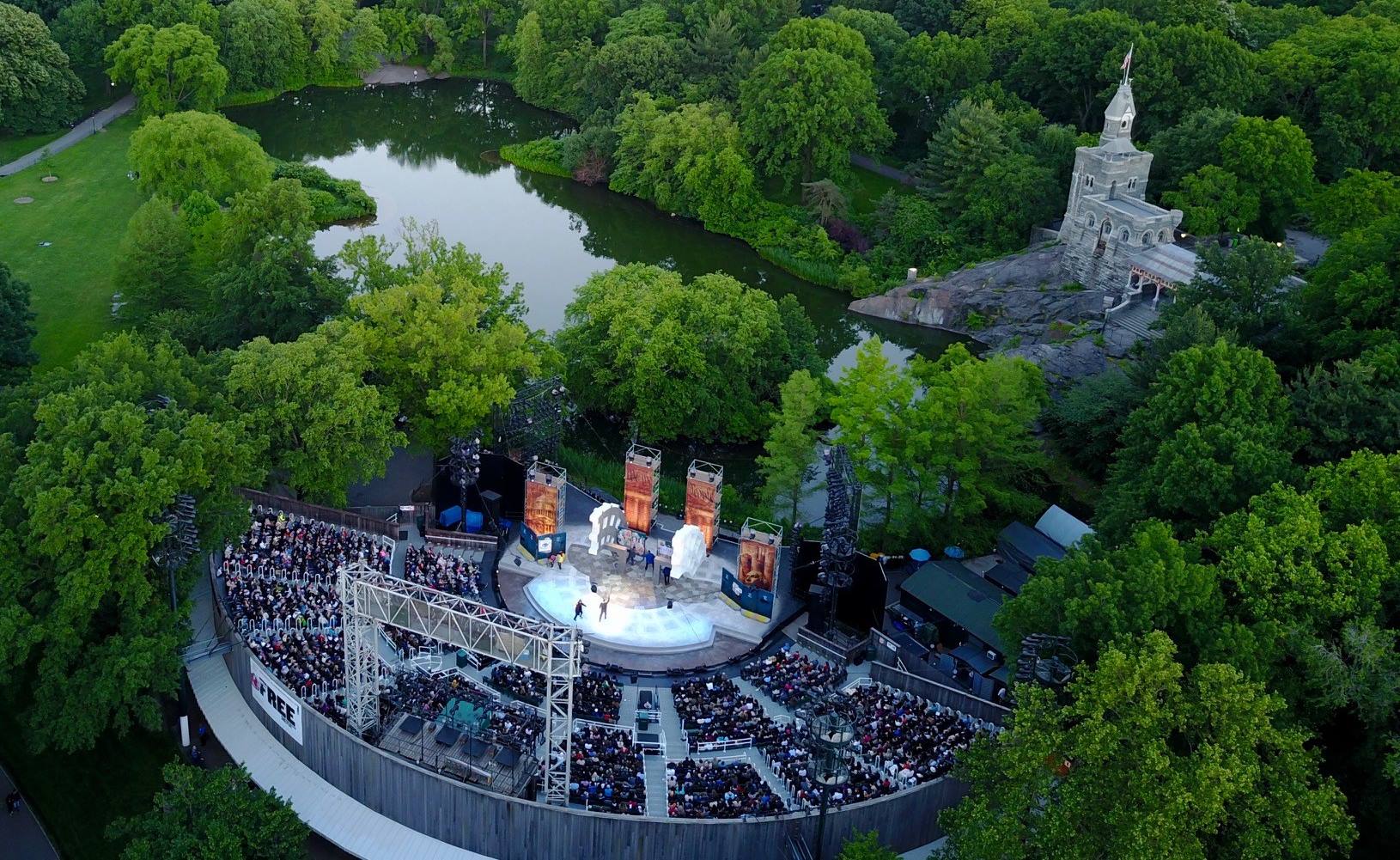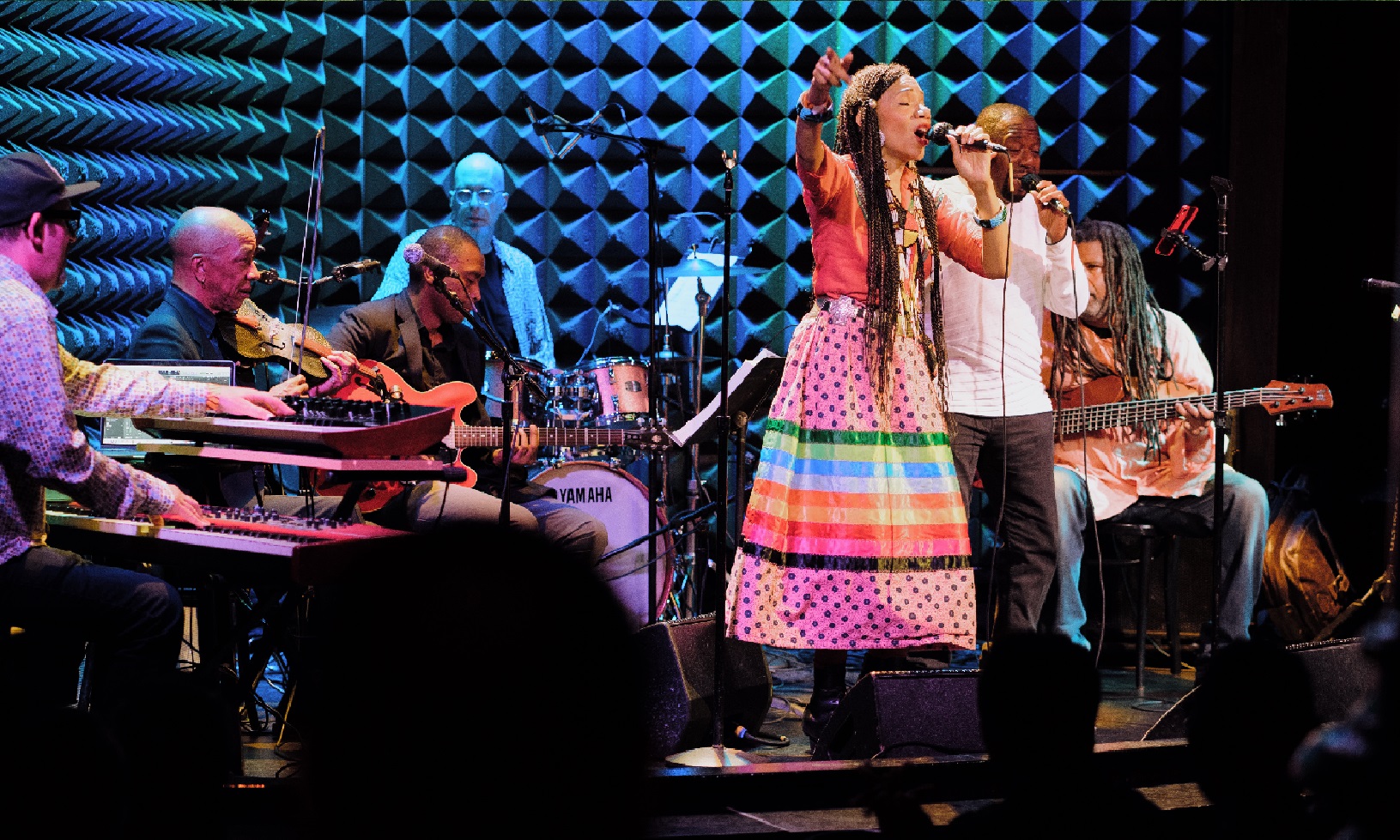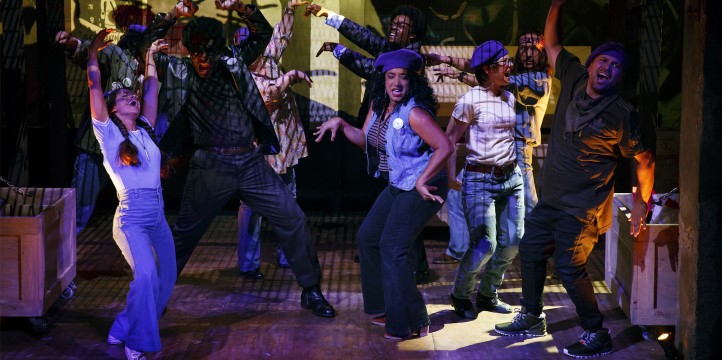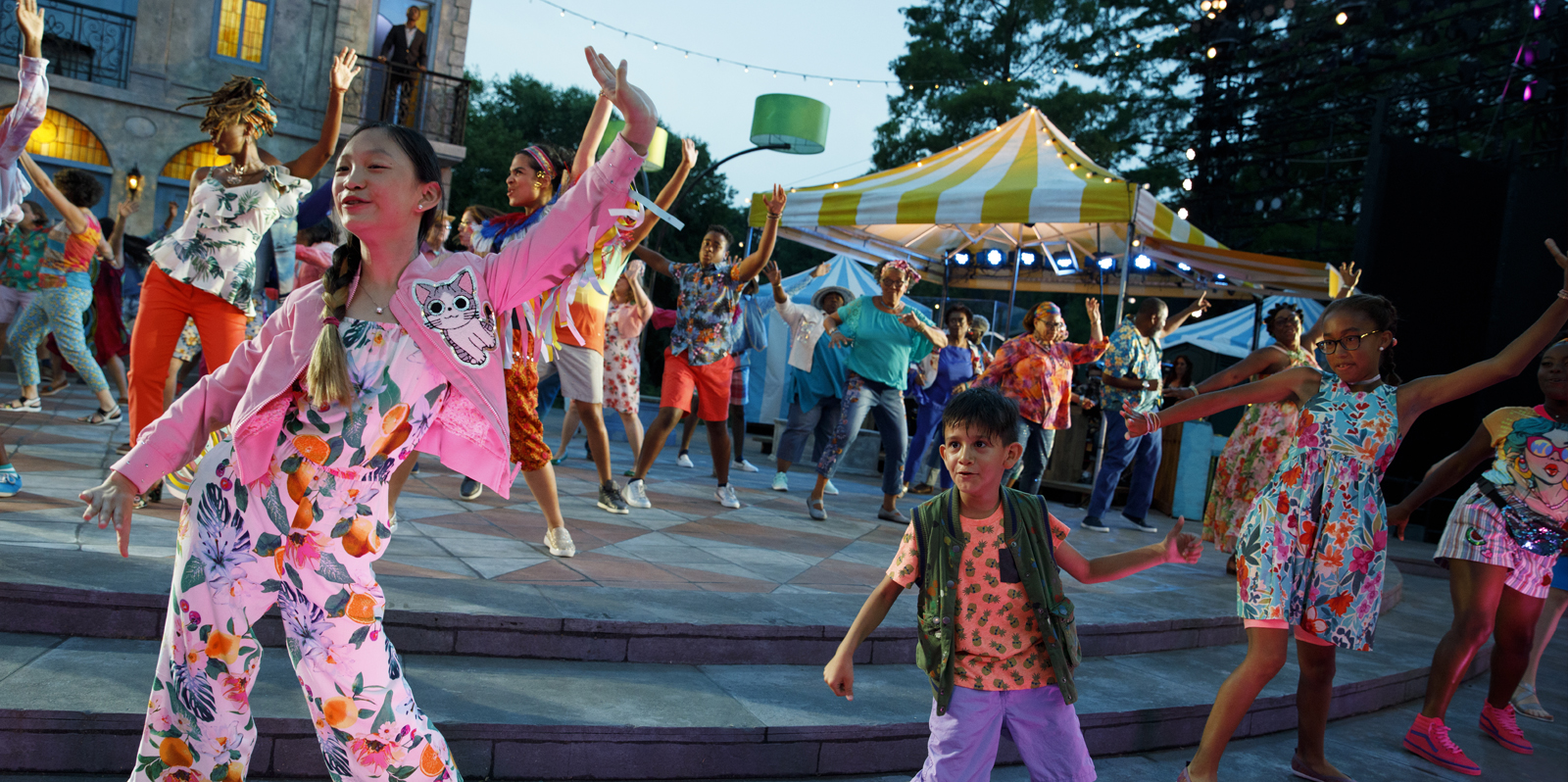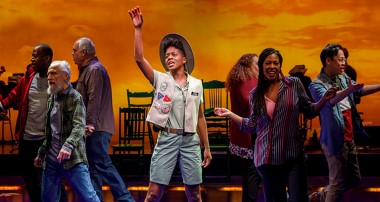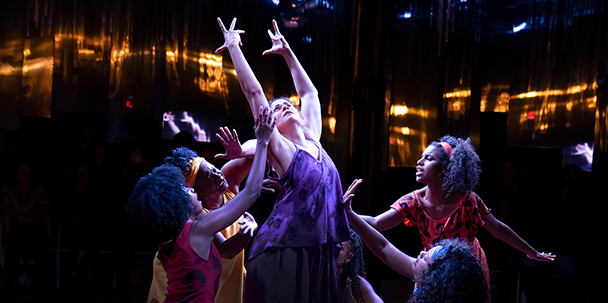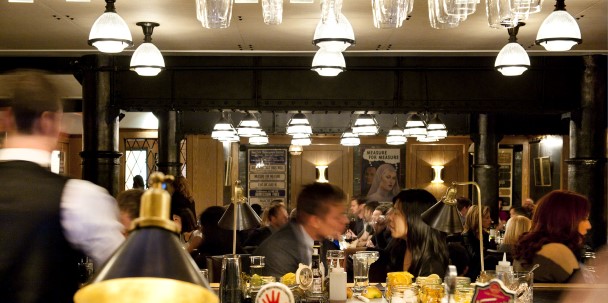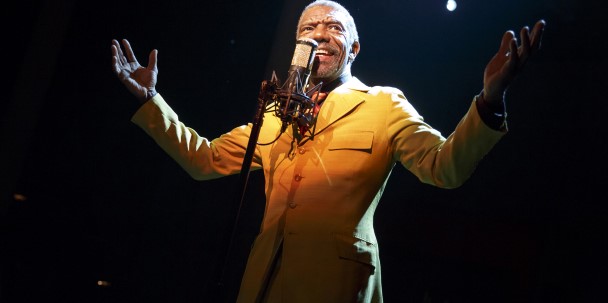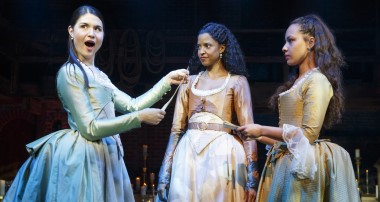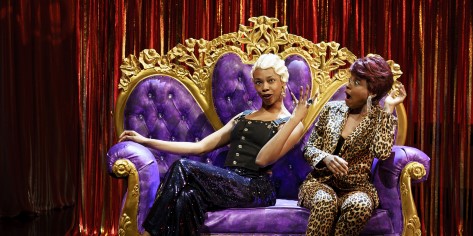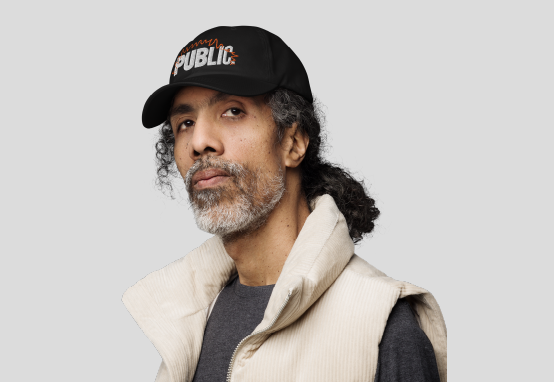Tony-nominated costume designer Dede Ayite returns to The Public Theater to bring the 90s New York City of Alicia Keys' teenage years to the stage in HELL'S KITCHEN.
Quotations have been lightly edited for brevity and clarity.
New York City in the 90s evokes a particular aesthetic—you might think of musical artists like Lauryn Hill, Missy Elliot, or Biggie. Dede Ayite, Tony-nominated costume designer of HELL’S KITCHEN, would agree that the music of the era is indelibly connected to her creative process bringing Alicia Keys’ New York City to life. I chatted with Ayite to learn more about her design process and how her ideas about the era transformed into the costumes you see onstage.
HELL’S KITCHEN is driven by the musicality of the city, brought into life by a chorus of characters whose notes, beats, and dance moves enchant seventeen-year-old Ali. For Ali and Ayite alike, the rhythm of the city is where it all starts. In December 2022, Ayite explained, she “got to see the dance workshop, which gave me a lot of context for what the script was dealing with… I love to be able to hear it out loud, see some physical movement and see some of the choreography because it really informs the energy we're hoping to put out on stage.”
Her experiences watching performers interact with Keys’ music and lyrics and Kristoffer Diaz’s book during workshops and rehearsals, as well as her conversations with director Michael Greif, Keys, and Diaz as the musical began to take shape, kept her on track to realize a key goal of the production. “It was very important for us,” she explained, “that it felt like real people and didn't feel like a caricature or like a cartoon version of the 90s. I wanted it to feel relatable, I wanted it to feel like these are people that we know and we can see a reflection of a part of ourselves within them.”
Essentially, Ayite developed the core of a character’s essence in communion with the body of the performer inhabiting it in order for the world of the musical to feel full, lived in. In fact, she considered witnessing this connection between word and body a significant aspect of the research informing her design for the show. After she got a sense of how the words of HELL’S KITCHEN resonate with the bodies performing them, Ayite looked to other sources to expand the world she is trying to create.
In our conversation, Ayite shared that she drew inspiration from many different sources including Keys’ memoir More Myself: A Journey, magazines and music videos from the era, documentaries about the era, and the fashion choices of celebrity icons of the 90s like Aliyah and the members of TLC. She used this variety so that “I can not just rely on the things I think I know, but I can add to what I already know. And expand that breadth of knowledge—visual knowledge, really—and challenge myself in different ways to communicate character and sketch out the show. It’s really just looking everywhere. And thinking about the script in relationship to the images that I'm gravitating towards. And then when I'm having conversations with the director [Greif], and with Alicia [Keys], I'm refining that process even further.”
As she continued to refine the design through visual research and collaborative conversation, Ayite extended her research of the era by incorporating elements of her own experiences with 90s fashion: “In high school I used to put together fashion shows… you would take oversized shirts tied around your waist, pull your jeans down low, and the kicks were the thing, like you gotta make sure your kicks were fly.” These fashion choices, she maintained, evoke a bold confidence that proclaims, in her words, “I’m here! Look at me. I’m leaning into my full self,” a subtext she aimed to make clear across her designs in HELL’S KITCHEN.
Most meaningful about her process working on HELL’S KITCHEN, she expressed, was the opportunity “to move within a space that highlights and showcases Blackness.” This sentiment was conveyed most resonantly as she detailed the opening moments of the show:
“Maleah [Joi Moon], who's playing Ali, starts the show in this orange jersey that has the logo ‘FUBU’—which is ‘For Us By Us’—and that sentiment just feels so strong and necessary and timely. That I'm in a space where I get to support storytelling, the culture, and heighten Black culture and New York City culture and celebrate it in a very beautiful, meaningful way.”
HELL’S KITCHEN is now playing at The Public Theater through January 14. Click here for more information on the show and how to get tickets.
Lia Christine Dewey (she/they) is a Chicago-based artist, producer, and writer. They, along with a team of other queer Chicago artists, are currently developing an adaptation of Larry Mitchell and Ned Asta’s seminal anthology of queer parables, The Faggots and their Friends Between Revolutions, set to be produced in Chicago in Summer 2024. For updates on this project, follow @fxgg0tsandfriends on Instagram.
This piece was developed with the BIPOC Critics Lab, a new program founded by Jose Solís training the next generation of BIPOC journalists. Follow on X: @BIPOCCriticsLab.
PHOTO: Maleah Joi Moon (foreground) and the company of HELL'S KITCHEN. Photo Credit: Joan Marcus.

